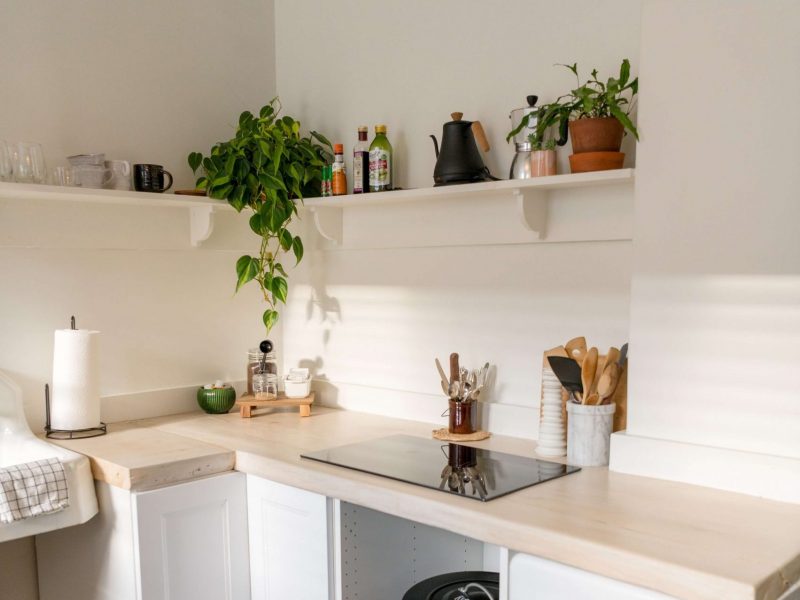
Top houseplant types for your small apartment
It can be frustrating sometimes when we can’t fit everything we’ve dreamed of into the 500 square feet apartment. But you shouldn’t need to compromise on having houseplants just because you don’t have loads of space. We have compiled a list of the best plants for small spaces and apartments which include hanging plants, small plants and slow-growing ones too.
By hanging them on shelves, it removes the need for a lot of floor space. And plants that don’t grow super quick (and therefore don’t need to be repotted often) mean you won’t suddenly wake up one day and your plant is taking over the entire room!
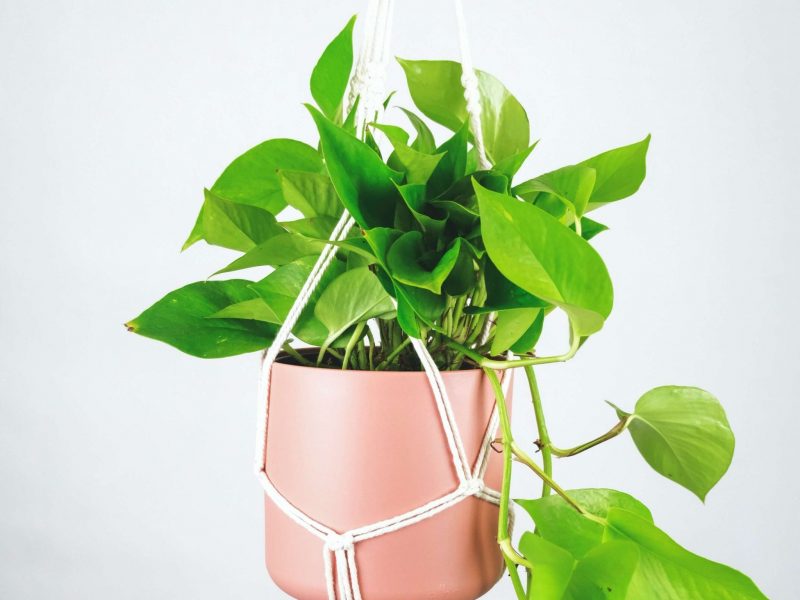
Devil's Ivy
Epipremnum aureum
These are pretty unique houseplants because they actually prefer lower-light conditions over anything else so are perfect for that little shady corner that needs sprucing up! That’s where the name comes from, as they are well acquainted with the darkness. If you have a variegated variety, it will actually start to lose its pattern if placed in too much sunlight. So you don’t need to feel guilty about putting a Devil’s Ivy in a shady spot because it will actually love you for it.
They are also pretty hardy plants in terms of their other care requirements. They don’t need complicated watering schedules or specific pruning so are perfect for any new plant parents. You can’t really go wrong with these at all!
When it comes to styling the Devil’s Ivy plant, shelving is where they thrive as it gives it room to cascade dramatically out of the pot. They can be trained to grow upwards by a wall or moss pole so the option is yours and depends on what space you want it to grow into.
Find out more in our Devil's Ivy care guide.
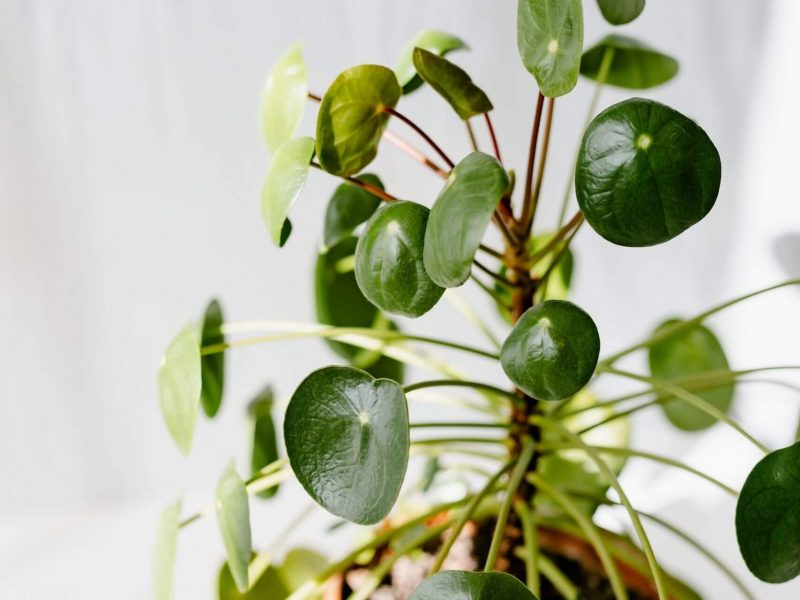
Chinese Money Plant
Pilea Peperomioides
Otherwise known as the Chinese Money Plant (they are believed to bring good luck and fortune to its owner), Pilea plants are a must-have! They initially became popular because they are so easy to propagate which meant Pilea pups got passed around a lot between friends and family, earning itself the nickname ‘pass it on plant’
When it comes to care, Pilea’s are somewhere in-between fussy and low maintenance. They aren’t great in low light areas, and also hate soggy or super dry soil so finding the right balance is key for Pilea care. They can start off super small and don’t grow very quickly at all, making them perfect for that windowsill or bedside table.
Find out more in our Chinese Money Plant care guide.
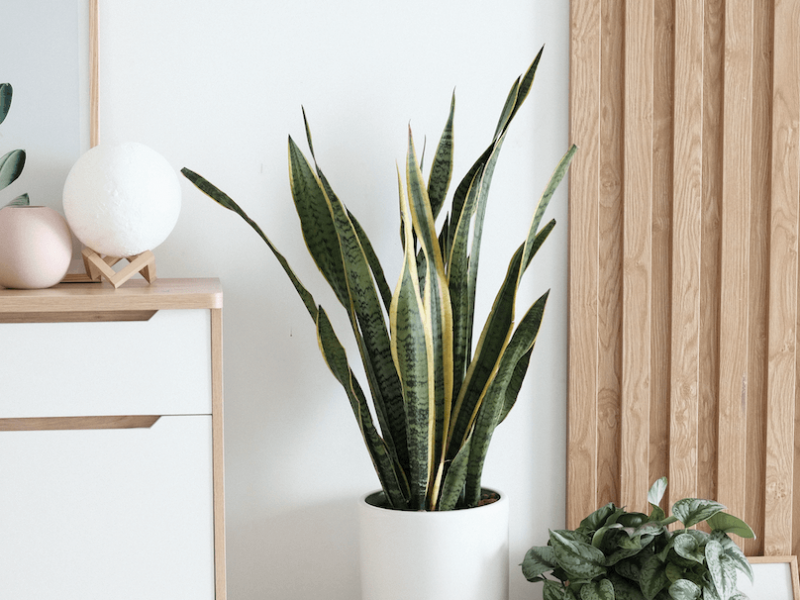
Snake Plant
Sansevieria Trifasciata
The bold and striking leaves of the Snake Plant make it stand out wherever you put it! Not only are they slow-growing, but they transcend upwards so are great for small spaces or that corner you never know what to do with. They have some of the sturdiest leaves or any houseplant, and their sharp leaf tips have given the plant the nickname of mother-in-laws-tongue!
When it comes to care, Snake Plant are super easy to look after, they can adapt to a range of light levels (are great low light plants), prefer dry soil and don’t need much attention in the way of misting or repotting etc. So if you want a low maintenance, sturdy houseplant, then the Snake Plant is your perfect match!
Find out more in our Snake Plant care guide.

Raindrop Peperomia
Peperomia Polybotrya
Don’t mistake this one for the more common Pilea Peperomioides as it’s definitely got its own personality and is so much easier to care for!! With teardrop-shaped leaves, the Raindrop Peperomia only grows to about 30m high so is perfect for a windowsill or small space.
When it comes to caring for them, they really aren’t fussy. Just a good amount of sunlight, moderate water levels and preferably away from cold drafts. One top tip we have to keep the leaves clean is misting them or wiping them down regularly as the large flat leaves just invite dust to settle. Oh, and they are safe for pets too so what’s not to love!
Find out more in our Raindrop Peperomia care guide.
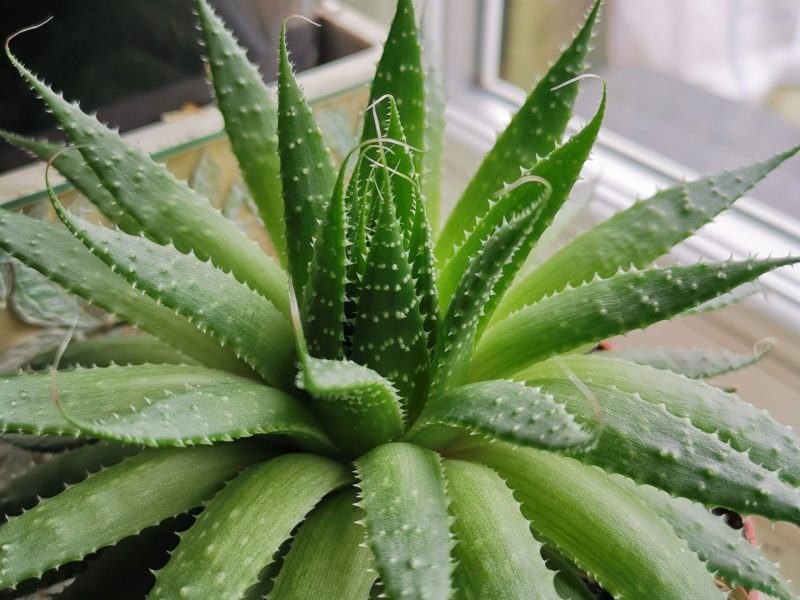
Aloe Vera
Aloe Barbadensis Miller
Although Aloe Vera plants are commonly loved for their gel, they are much more than just their health and beauty benefits, as they make for a super minimalist and forgiving houseplant! Like most other succulents, Aloe Vera plants don’t need much tending to as they thrive in dry coarse potting mix. But it is important that they get a good amount of bright light or will become quite straggly.
As they mature a little, you’ll see lots of little Aloe pups popping up which can be very easily removed from the mother plant and propagated! Aloe plants are super affordable and you can pick them up basically anywhere that sells plants, even supermarkets will often sell them in the summer months.
Find out more in our Aloe Vera care guide.
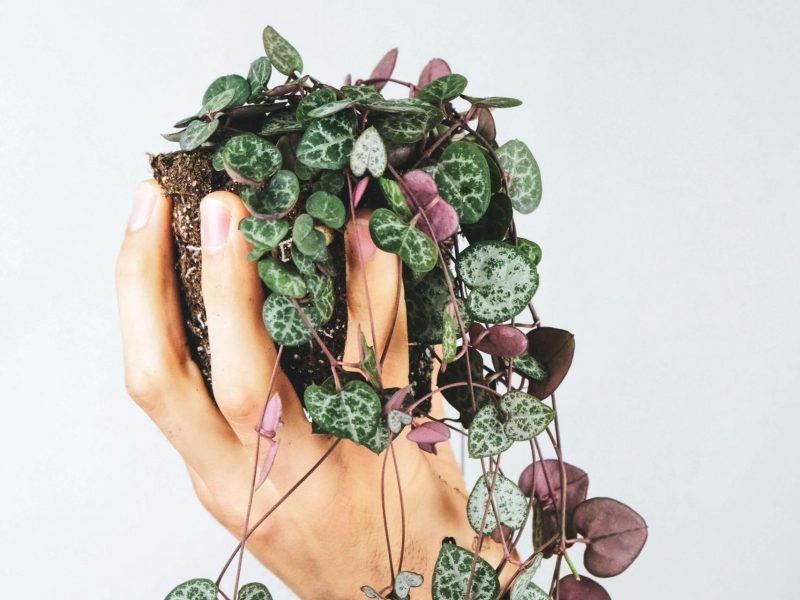
String of Hearts
Ceropegia woodii
Native to South Africa, the String of Hearts should be top on your list for trailing houseplants. You don’t get much more unique than their speckled heart-shaped leaves. The other thing we love about the String of Hearts is that it’s such a fast grower over the spring and summer months, you’ll blink and there will be two new leaves popping out somewhere.
The String of Hearts is a semi-succulent plant meaning they don’t need much water, otherwise, it’ll cause their delicate shallow leaves to rot pretty quickly. Oh, and because they have such shallow roots, you won’t need to repot for a very very long time.
It makes the perfect plant for hanging down shelving, and because its pet friendly, you don’t need to worry about it ever becoming too long!
Find out more in our String of Hearts care guide.
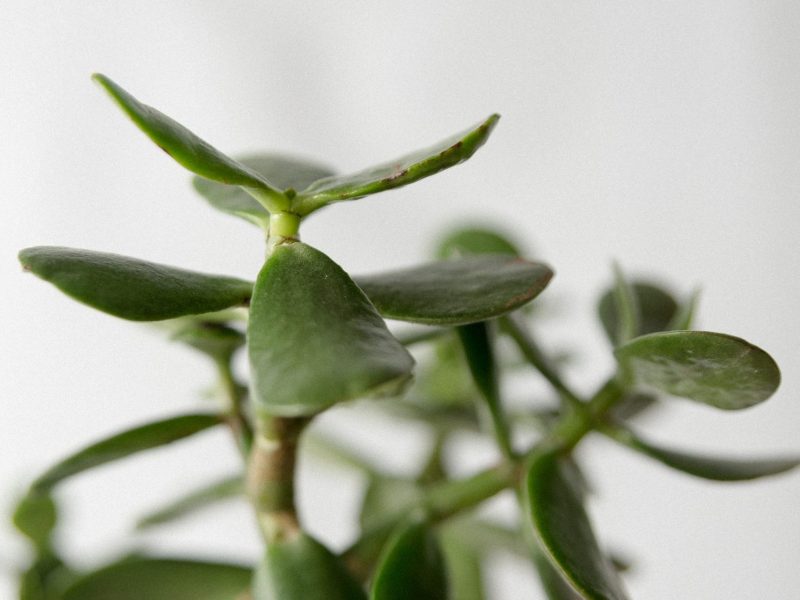
Jade Plant
Crassula ovata
Believed to bring luck, Jade Plants are one of the most popular succulent varieties. They are best known for their oval-shaped leaves and strong stems which become quite woody as they mature.
When it comes to caring for your Jade Plants, the top two things to remember is to give it a spot that gets ample sunshine throughout the day as well as making sure the potting mix has fully dried out before watering again as they are susceptible to root rot if you’re not careful. Jade Plants are quite slow growers though, so even if the environment and care routine are perfect, they may only grow a few inches per year which is why they are perfect for small spaces that still need a little bit of luscious greenery!
Find out more in our Jade Plant care guide.
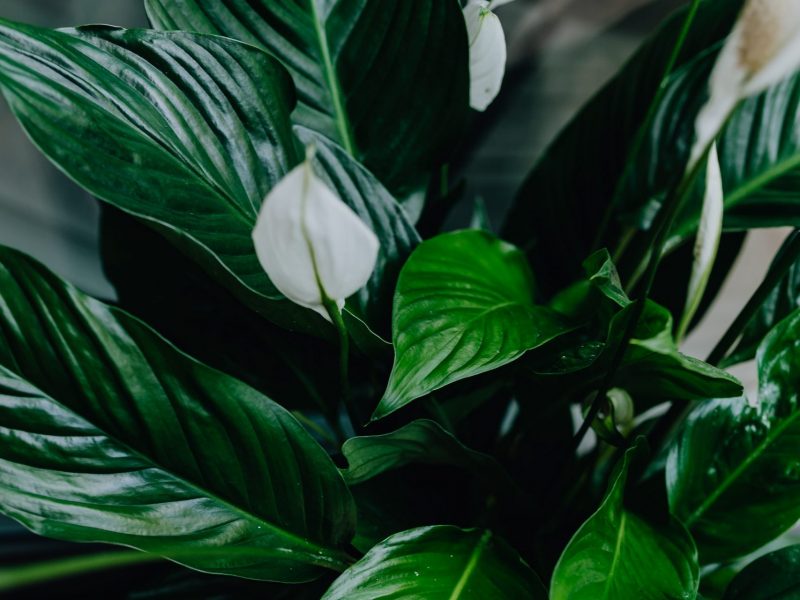
Peace Lily
Spathiphyllum wallisii
There’s a reason that Peace Lilies are so popular, and it’s not just because of their incredible white flowers. They are super low maintenance plants that can adapt and thrive in most homes. They can tolerate all light levels which is super rare for houseplants.
Our favourite thing about the Peace Lily is that it really helps us plant parents out by drooping its leaves when it really needs water. This can help you spot underwatering before it’s really a problem. Within minutes of watering, the leaves will perk up – it’s pretty cool! And if we haven’t sold you on the Peace Lily yet, then you should probably know that they are also one of the best plants at purifying the air and removing chemicals from your home!
Find out more in our Peace Lily care guide.
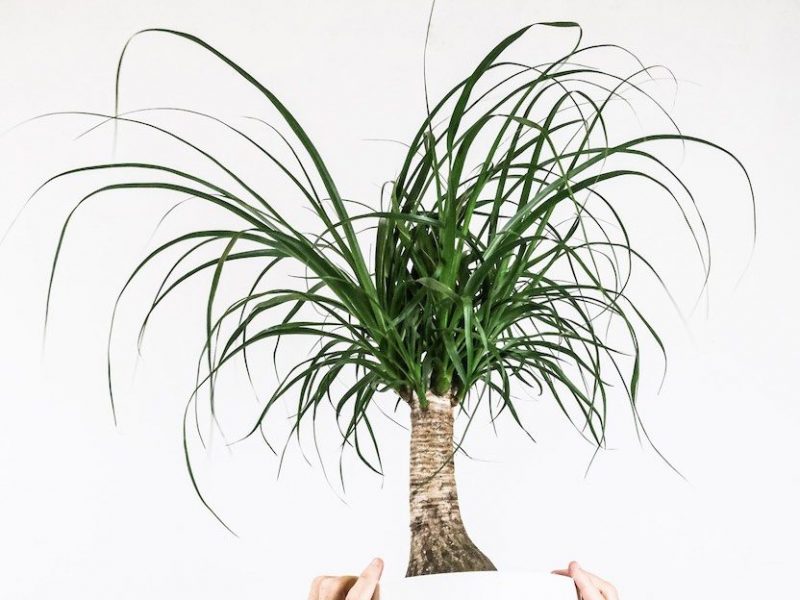
Ponytail Palm
Beaucarnea recurvata
This is a Palm with a personality! The Ponytail Palm is loved for its long curly leaves which instantly bring the tropical beach vibes…
Interestingly, the Ponytail Palm is neither a palm nor a tree, it’s actually a succulent which is why they are super low maintenance. All they need is a spot with ample light and warmth and they’ll be happy. They don’t need much water either as they are able to store it in their trunk. Ponytail Palms are quite slow-growing so you won’t need to upsize the pot anytime soon.
Find out more in our Ponytail Palm care guide.
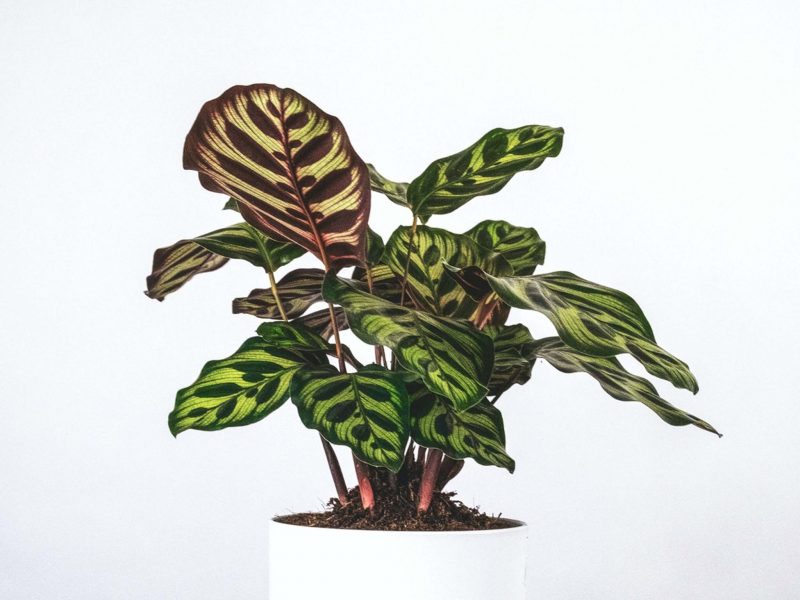
Peacock Plant
Calathea makoyana
The Calathea makoyana is known and loved for the bold and unique markings on the leaves, as well as their red undersides, a classic trademark of many Calathea plants. Peacock plants don’t grow very tall so are perfect for smaller homes and spaces as you won’t need to put this one on the floor.
When it comes to care, it’s important to note that the Peacock Plant can be a little temperamental sometimes, so we don’t always recommend this one to plant beginners. You must keep them away from direct light, mist them to boost the humidity and never let them fully dry out for long periods of time. They also need quite warm temperatures to really thrive, so drafts and AC vents are a no-go for Peacock Plants.
Peacock Plants can grow very small white flowers sometimes, but don’t think you aren’t caring for your plant properly if it doesn’t bloom. Flowers are quite rare and unpredictable, but a nice surprise when it does happen!
Find out more in our Peacock Plant care guide.














